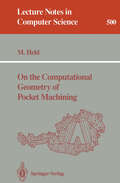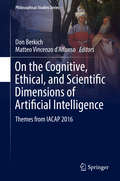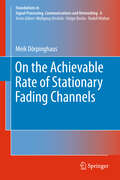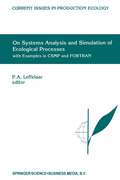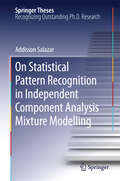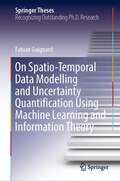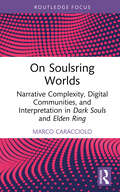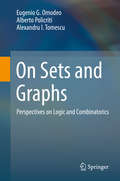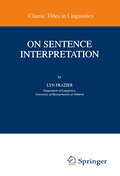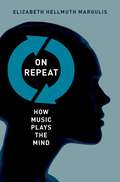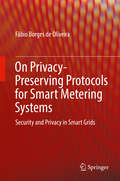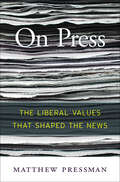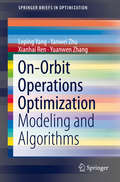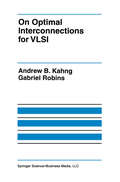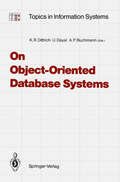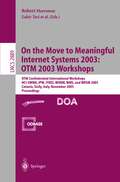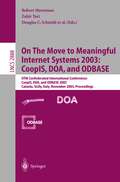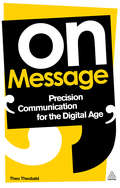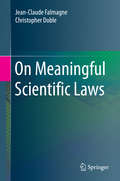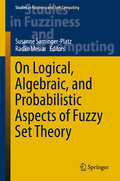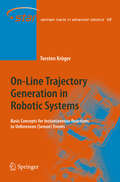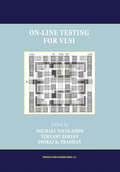- Table View
- List View
On the Computational Geometry of Pocket Machining (Lecture Notes in Computer Science #500)
by Martin HeldIn this monograph the author presents a thorough computational geometry approach to handling theoretical and practical problems arising from numerically controlled pocket machining. The approach unifies two scientific disciplines: computational geometry and mechanical engineering. Topics of practical importance that are dealt with include the selection of tool sizes, the determination of tool paths, and the optimization of tool paths. Full details of the algorithms are given from a practical point of view, including information on implementation issues. This practice-minded approach is embedded in a rigorous theoretical framework enabling concise statement of definitions and proof of the correctness and efficiency of the algorithms. In particular, the construction of Voronoi diagrams and their use for offset calculations are investigated in great detail. Based on Voronoi diagrams, a graph-like structure is introduced that serves as a high-level abstraction of the pocket geometry and provides the basis for algorithmically performing shape interrogation and path planning tasks. Finally, the efficiency and robustness of the approach is illustrated with figures showing pocketing examples that have been processed by the author's own implementation.
On the Cognitive, Ethical, and Scientific Dimensions of Artificial Intelligence: Themes from IACAP 2016 (Philosophical Studies Series #134)
by Don Berkich Matteo Vincenzo D'AlfonsoThis edited volume explores the intersection between philosophy and computing. It features work presented at the 2016 annual meeting of the International Association for Computing and Philosophy. The 23 contributions to this volume neatly represent a cross section of 40 papers, four keynote addresses, and eight symposia as they cut across six distinct research agendas. The volume begins with foundational studies in computation and information, epistemology and philosophy of science, and logic. The contributions next examine research into computational aspects of cognition and philosophy of mind. This leads to a look at moral dimensions of man-machine interaction as well as issues of trust, privacy, and justice. This multi-disciplinary or, better yet, a-disciplinary investigation reveals the fruitfulness of erasing distinctions among and boundaries between established academic disciplines. This should come as no surprise. The computational turn itself is a-disciplinary and no former discipline, whether scientific, artistic, or humanistic, has remained unchanged. Rigorous reflection on the nature of these changes opens the door to inquiry into the nature of the world, what constitutes our knowledge of it, and our understanding of our place in it. These investigations are only just beginning. The contributions to this volume make this clear: many encourage further research and end with open questions.
On the Achievable Rate of Stationary Fading Channels (Foundations in Signal Processing, Communications and Networking #6)
by Meik DörpinghausThis volumes discusses various aspects regarding the capacity/achievable data rate of stationary Rayleigh fading channels. First, it analyses bounds on the achievable data rate with zero-mean proper Gaussian input symbols, which are capacity achieving in the coherent case, i.e., in case of perfect channel knowledge at the receiver. These bounds are tight in the sense that the difference between the upper and the lower bound is bounded for all SNRs. The lower bound converges to the coherent capacity for asymptotically small channel dynamics. Furthermore, these bounds are extended to the case of multiple-input multiple-output (MIMO) channels and to the case of frequency selective channels. In a further part, the present work studies the achievable rate with receivers based on synchronized detection and a code-aided channel estimation. For a specific type of such a receiver an approximate upper bound on the achievable rate is derived. The comparison of this approximate upper bound and the achievable data rate with receivers using synchronized detection based on a solely pilot based channel estimation gives an approximate upper bound on the possible gain by using this kind of code-aided channel estimation in comparison to the conventional receiver using a solely pilot based channel estimation. In addition, the achievable data rate with an optimal joint processing of pilot and data symbols is studied and a lower bound on the achievable rate for this case is derived. In this context, it is also shown which part of the mutual information of the transmitter and the receiver is discarded when using the conventional receiver with synchronized detection based on a solely pilot based channel estimation.
On Systems Analysis and Simulation of Ecological Processes with Examples in CSMP and FORTRAN (Current Issues in Production Ecology #1)
by P. A. LeffelaarA system may be studied by distinguishing its major components, characterizing the changes in them by differential equations that form their simplified representa tions, and then interconnecting these representations to obtain a model of the original system. Developing the model is the systems synthesis phase. The behaviour of the model may now be studied and compared with experimental results obtained from the system. This research method is called systems analysis and simulation. Systems analysis and simulation can serve to make predictions, to improve the insight in systems, and to test knowledge on consistency and completeness. Predictive models are rare in ecology, simply because the underlying processes which form the basis of the models are seldom well known. A successful example of a predictive model was the work of van Keulen (1975). He showed that under semi arid conditions, where water is the main factor controlling primary production, the simulation technique could predict the production of natural grasslands. Fair predicti ons could also be made for the Sahelian pastures (Penning de Vries & Djiteye, 1982). Predictive models of populations of different pest and disease organisms are being used in biological control systems (Zadoks et aI., 1984).
On Statistical Pattern Recognition in Independent Component Analysis Mixture Modelling (Springer Theses #4)
by Addisson SalazarA natural evolution of statistical signal processing, in connection with the progressive increase in computational power, has been exploiting higher-order information. Thus, high-order spectral analysis and nonlinear adaptive filtering have received the attention of many researchers. One of the most successful techniques for non-linear processing of data with complex non-Gaussian distributions is the independent component analysis mixture modelling (ICAMM). This thesis defines a novel formalism for pattern recognition and classification based on ICAMM, which unifies a certain number of pattern recognition tasks allowing generalization. The versatile and powerful framework developed in this work can deal with data obtained from quite different areas, such as image processing, impact-echo testing, cultural heritage, hypnograms analysis, web-mining and might therefore be employed to solve many different real-world problems.
On Spatio-Temporal Data Modelling and Uncertainty Quantification Using Machine Learning and Information Theory (Springer Theses)
by Fabian GuignardThe gathering and storage of data indexed in space and time are experiencing unprecedented growth, demanding for advanced and adapted tools to analyse them. This thesis deals with the exploration and modelling of complex high-frequency and non-stationary spatio-temporal data. It proposes an efficient framework in modelling with machine learning algorithms spatio-temporal fields measured on irregular monitoring networks, accounting for high dimensional input space and large data sets. The uncertainty quantification is enabled by specifying this framework with the extreme learning machine, a particular type of artificial neural network for which analytical results, variance estimation and confidence intervals are developed. Particular attention is also paid to a highly versatile exploratory data analysis tool based on information theory, the Fisher-Shannon analysis, which can be used to assess the complexity of distributional properties of temporal, spatial and spatio-temporal data sets. Examples of the proposed methodologies are concentrated on data from environmental sciences, with an emphasis on wind speed modelling in complex mountainous terrain and the resulting renewable energy assessment. The contributions of this thesis can find a large number of applications in several research domains where exploration, understanding, clustering, interpolation and forecasting of complex phenomena are of utmost importance.
On Soulsring Worlds: Narrative Complexity, Digital Communities, and Interpretation in Dark Souls and Elden Ring (ISSN)
by Marco CaraccioloThe first book-length study devoted to FromSoftware games, On Soulsring Worlds explores how the Dark Souls series and Elden Ring are able to reconcile extreme difficulty in both gameplay and narrative with broad appeal.Arguing that the games are strategically positioned in relation to contemporary audiences and designed to tap into the new forms of interpretation afforded by digital media, the author situates the games vis-à-vis a number of current debates, including the posthuman and the ethics of gameplay. The book delivers an object lesson on the value of narrative (and) complexity in digital play and in the interpretive practices it gives rise to.Cross-fertilizing narrative theory, game studies, and nonhuman-oriented philosophy, this book will appeal to students and scholars of game studies, media studies, narratology, and video game ethnography.
On Soulsring Worlds: Narrative Complexity, Digital Communities, and Interpretation in Dark Souls and Elden Ring (ISSN)
by Marco CaraccioloThe first book-length study devoted to FromSoftware games, On Soulsring Worlds explores how the Dark Souls series and Elden Ring are able to reconcile extreme difficulty in both gameplay and narrative with broad appeal.Arguing that the games are strategically positioned in relation to contemporary audiences and designed to tap into the new forms of interpretation afforded by digital media, the author situates the games vis-à-vis a number of current debates, including the posthuman and the ethics of gameplay. The book delivers an object lesson on the value of narrative (and) complexity in digital play and in the interpretive practices it gives rise to.Cross-fertilizing narrative theory, game studies, and nonhuman-oriented philosophy, this book will appeal to students and scholars of game studies, media studies, narratology, and video game ethnography.
On Sets and Graphs: Perspectives on Logic and Combinatorics
by Eugenio G. Omodeo Alberto Policriti Alexandru I. TomescuThis treatise presents an integrated perspective on the interplay of set theory and graph theory, providing an extensive selection of examples that highlight how methods from one theory can be used to better solve problems originated in the other. Features: explores the interrelationships between sets and graphs and their applications to finite combinatorics; introduces the fundamental graph-theoretical notions from the standpoint of both set theory and dyadic logic, and presents a discussion on set universes; explains how sets can conveniently model graphs, discussing set graphs and set-theoretic representations of claw-free graphs; investigates when it is convenient to represent sets by graphs, covering counting and encoding problems, the random generation of sets, and the analysis of infinite sets; presents excerpts of formal proofs concerning graphs, whose correctness was verified by means of an automated proof-assistant; contains numerous exercises, examples, definitions, problems and insight panels.
On Sentence Interpretation (Studies in Theoretical Psycholinguistics #22)
by Lyn FrazierAt present there exists no empirically-motivated theory of how perceivers assign a grammatically-permissible interpretation to a sentence. Implicit in many investigations of language comprehension is the idea that each constituent of a sentence is interpreted by the perceiver at the earliest conceivable point, using all potentially relevant sources of information. A variety of counter examples are presented to argue against this implicit theory of sentence interpretation. It is argued that an explicit alternative theory is needed to specify which decisions are made at which points during interpretive processing and to spell out the principles governing the processor's preferred choice at points of ambiguity or uncertainty. Several specific issues are taken concerning how the processor assigns a focal structure to an input sentence, how it identifies the topic of the sentence, how implicit restrictors on the domain of quantification are interpreted and how the identification of the content of a restrictor may guide the processor's use of discourse information. Exploiting intuitions about preferred interpretations of ambiguous sentences as well as the results of both old and new experimental studies, a theory of the preferred interpretation of Determiner Phrases is presented. This work explores important, but overlooked questions in on-line sentence interpretation and attempts to erect some of the scaffolding for an eventual theory of sentence interpretation.
On Repeat: How Music Plays the Mind
by Elizabeth Hellmuth MargulisWinner of the Wallace Berry Award, Society for Music Theory Winner of the Deems Taylor/Virgil Thomson Award, ASCAP What is it about the music you love that makes you want to hear it again? Why do we crave a "hook" that returns, again and again, within the same piece? And how does a song end up getting stuck in your head? Whether it's a motif repeated throughout a composition, a sample looped under an electronic dance beat, a passage replayed incessantly by a musician in a practice room-or an "earworm" burrowing through your mind like a broken record-repetition is nearly as integral to music as the notes themselves. Its centrality has been acknowledged by everyone from evolutionary biologist W. Tecumseh Fitch, who has called it a "design feature" of music, to the composer Arnold Schoenberg who admitted that "intelligibility in music seems to be impossible without repetition." And yet, stunningly little is actually understood about repetition and its role in music. On Repeat offers the first in-depth inquiry into music's repetitive nature, focusing not on a particular style, or body of work, but on repertoire from across time periods and cultures. Author Elizabeth Hellmuth Margulis draws on a diverse array of fields including music theory, psycholinguistics, neuroscience, and cognitive psychology, to look head-on at the underlying perceptual mechanisms associated with repetition. Her work sheds light on a range of issues from repetition's use as a compositional tool to its role in characterizing our behavior as listeners, and then moves beyond music to consider related implications for repetition in language, learning, and communication. Written in engaging prose, and enlivening otherwise complex concepts for the specialist and non-specialist alike, On Repeat will captivate scholars and students across numerous disciplines from music theory and history, to psychology and neuroscience-and anyone fascinated by the puzzle of repetition in music.
On Repeat: How Music Plays the Mind
by Elizabeth Hellmuth MargulisWinner of the Wallace Berry Award, Society for Music Theory Winner of the Deems Taylor/Virgil Thomson Award, ASCAP What is it about the music you love that makes you want to hear it again? Why do we crave a "hook" that returns, again and again, within the same piece? And how does a song end up getting stuck in your head? Whether it's a motif repeated throughout a composition, a sample looped under an electronic dance beat, a passage replayed incessantly by a musician in a practice room-or an "earworm" burrowing through your mind like a broken record-repetition is nearly as integral to music as the notes themselves. Its centrality has been acknowledged by everyone from evolutionary biologist W. Tecumseh Fitch, who has called it a "design feature" of music, to the composer Arnold Schoenberg who admitted that "intelligibility in music seems to be impossible without repetition." And yet, stunningly little is actually understood about repetition and its role in music. On Repeat offers the first in-depth inquiry into music's repetitive nature, focusing not on a particular style, or body of work, but on repertoire from across time periods and cultures. Author Elizabeth Hellmuth Margulis draws on a diverse array of fields including music theory, psycholinguistics, neuroscience, and cognitive psychology, to look head-on at the underlying perceptual mechanisms associated with repetition. Her work sheds light on a range of issues from repetition's use as a compositional tool to its role in characterizing our behavior as listeners, and then moves beyond music to consider related implications for repetition in language, learning, and communication. Written in engaging prose, and enlivening otherwise complex concepts for the specialist and non-specialist alike, On Repeat will captivate scholars and students across numerous disciplines from music theory and history, to psychology and neuroscience-and anyone fascinated by the puzzle of repetition in music.
On Privacy-Preserving Protocols for Smart Metering Systems: Security and Privacy in Smart Grids
by Fábio Borges de OliveiraThis book presents current research in privacy-preserving protocols for smart grids. It contains several approaches and compares them analytically and by means of simulation. In particular, the book introduces asymmetric DC-Nets, which offer an ideal combination of performance and features in comparison with homomorphic encryption; data anonymization via cryptographic protocols; and data obfuscation by means of noise injection or by means of the installation of storage banks. The author shows that this theory can be leveraged into several application scenarios, and how asymmetric DC-Nets are generalizations of additive homomorphic encryption schemes and abstractions of symmetric DC-Nets. The book provides the reader with an understanding about smart grid scenarios, the privacy problem, and the mathematics and algorithms used to solve it.
On Press: The Liberal Values That Shaped the News
by Matthew PressmanAs Matthew Pressman’s timely history reveals, during the turbulent 1960s and 70s the core values that held the news industry together broke apart and the distinctive characteristics of contemporary American print journalism emerged. Simply reporting the facts was no longer enough as reporters recognized a need to interpret events for their readers.
On-Orbit Operations Optimization: Modeling and Algorithms (SpringerBriefs in Optimization)
by Leping Yang Yanwei Zhu Xianhai Ren Yuanwen ZhangOn-orbit operations optimization among multiple cooperative or noncooperative spacecraft, which is often challenged by tight constraints and shifting parameters, has grown to be a hot issue in recent years. The authors of this book summarize related optimization problems into four planning categories: spacecraft multi-mission planning, far-range orbital maneuver planning, proximity relative motion planning and multi-spacecraft coordinated planning. The authors then formulate models, introduce optimization methods, and investigate simulation cases that address problems in these four categories. This text will serve as a quick reference for engineers, graduate students, postgraduates in the fields of optimization research and on-orbit operation mission planning.
On Optimal Interconnections for VLSI (The Springer International Series in Engineering and Computer Science #301)
by Andrew B. Kahng Gabriel RobinsOn Optimal Interconnections for VLSI describes, from a geometric perspective, algorithms for high-performance, high-density interconnections during the global and detailed routing phases of circuit layout. First, the book addresses area minimization, with a focus on near-optimal approximation algorithms for minimum-cost Steiner routing. In addition to practical implementations of recent methods, the implications of recent results on spanning tree degree bounds and the method of Zelikovsky are discussed. Second, the book addresses delay minimization, starting with a discussion of accurate, yet algorithmically tractable, delay models. Recent minimum-delay constructions are highlighted, including provably good cost-radius tradeoffs, critical-sink routing algorithms, Elmore delay-optimal routing, graph Steiner arborescences, non-tree routing, and wiresizing. Third, the book addresses skew minimization for clock routing and prescribed-delay routing formulations. The discussion starts with early matching-based constructions and goes on to treat zero-skew routing with provably minimum wirelength, as well as planar clock routing. Finally, the book concludes with a discussion of multiple (competing) objectives, i.e., how to optimize area, delay, skew, and other objectives simultaneously. These techniques are useful when the routing instance has heterogeneous resources or is highly congested, as in FPGA routing, multi-chip packaging, and very dense layouts. Throughout the book, the emphasis is on practical algorithms and a complete self-contained development. On Optimal Interconnections for VLSI will be of use to both circuit designers (CAD tool users) as well as researchers and developers in the area of performance-driven physical design.
On Object-Oriented Database Systems (Topics in Information Systems)
by Klaus R. Dittrich Umeshwar Dayal Alejandro P. BuchmannObject-oriented database systems have been approached with mainly two major intentions in mind, namely to better support new application areas including CAD/CAM, office automation, knowledge engineering, and to overcome the `impendance mismatch' between data models and programming languages. This volume gives a comprehensive overwiew of developments in this flourishing area of current database research. Data model and language aspects, interface and database design issues, architectural and implementation questions are covered. Although based on a series of workshops, the contents of this book has been carefully edited to reflect the current state of international research in object oriented database design and implementation.
On The Move to Meaningful Internet Systems 2003: OTM Confederated International Workshops, HCI-SWWA, IPW, JTRES, WORM, WMS, and WRSM 2003, Catania, Sicily, Italy, November 3-7, 2003, Proceedings (Lecture Notes in Computer Science #2889)
by Zahir Tarimissions in fact also treat an envisaged mutual impact among them. As for the 2002 edition in Irvine, the organizers wanted to stimulate this cross-pollination with a program of shared famous keynote speakers (this year we got Sycara, - ble, Soley and Mylopoulos!), and encouraged multiple attendance by providing authors with free access to another conference or workshop of their choice. We received an even larger number of submissions than last year for the three conferences (360 in total) and the workshops (170 in total). Not only can we therefore again claim a measurable success in attracting a representative volume of scienti?c papers, but such a harvest allowed the program committees of course to compose a high-quality cross-section of worldwide research in the areas covered. In spite of the increased number of submissions, the Program Chairs of the three main conferences decided to accept only approximately the same number of papers for presentation and publication as in 2002 (i. e. , around 1 paper out of every 4–5 submitted). For the workshops, the acceptance rate was about 1 in 2. Also for this reason, we decided to separate the proceedings into two volumes with their own titles, and we are grateful to Springer-Verlag for their collaboration in producing these two books. The reviewing process by the respective program committees was very professional and each paper in the main conferences was reviewed by at least three referees.
On The Move to Meaningful Internet Systems 2003: OTM Confederated International Conferences CoopIS, DOA, and ODBASE 2003 Catania, Sicily, Italy, November 3–7, 2003 Proceedings (Lecture Notes in Computer Science #2888)
by Zahir Tari Douglas C. Schmidtmissions in fact also treat an envisaged mutual impact among them. As for the 2002 edition in Irvine, the organizers wanted to stimulate this cross-pollination with a program of shared famous keynote speakers (this year we got Sycara, - ble, Soley and Mylopoulos!), and encouraged multiple attendance by providing authors with free access to another conference or workshop of their choice. We received an even larger number of submissions than last year for the three conferences (360 in total) and the workshops (170 in total). Not only can we therefore again claim a measurable success in attracting a representative volume of scienti?c papers, but such a harvest allowed the program committees of course to compose a high-quality cross-section of worldwide research in the areas covered. In spite of the increased number of submissions, the Program Chairs of the three main conferences decided to accept only approximately the same number of papers for presentation and publication as in 2002 (i. e. , around 1 paper out of every 4–5 submitted). For the workshops, the acceptance rate was about 1 in 2. Also for this reason, we decided to separate the proceedings into two volumes with their own titles, and we are grateful to Springer-Verlag for their collaboration in producing these two books. The reviewing process by the respective program committees was very professional and each paper in the main conferences was reviewed by at least three referees.
On Message: Precision Communication for the Digital Age (Kogan Page Ser.)
by Theo TheobaldGone are the days of the traditional sales letter. Engaging with global audiences in an increasingly competitive world means that what you say has to be incisive, relevant and delivered in a way that can't be ignored. On Message provides expert guidance to help you keep up with the demands of the newest of new media, build a community and compete with big players. Packed with examples and practical help, it includes: templates; simple formulae for better messaging; practise exercises; review techniques; tips on flexing your writing muscles, and strategies to develop hard-hitting communication.Examining how to capture more followers who listen for longer and more intently, On Message will teach you how to develop your voice, segment your audience for more effective messaging, edit existing copy and engage with new and emerging markets.
On Message: Precision Communication for the Digital Age
by Theo TheobaldGone are the days of the traditional sales letter. Engaging with global audiences in an increasingly competitive world means that what you say has to be incisive, relevant and delivered in a way that can't be ignored. On Message provides expert guidance to help you keep up with the demands of the newest of new media, build a community and compete with big players. Packed with examples and practical help, it includes: templates; simple formulae for better messaging; practise exercises; review techniques; tips on flexing your writing muscles, and strategies to develop hard-hitting communication.Examining how to capture more followers who listen for longer and more intently, On Message will teach you how to develop your voice, segment your audience for more effective messaging, edit existing copy and engage with new and emerging markets.
On Meaningful Scientific Laws
by Jean-Claude Falmagne Christopher DobleThe authors describe systematic methods for uncovering scientific laws a priori, on the basis of intuition, or “Gedanken Experiments”. Mathematical expressions of scientific laws are, by convention, constrained by the rule that their form must be invariant with changes of the units of their variables. This constraint makes it possible to narrow down the possible forms of the laws. It is closely related to, but different from, dimensional analysis. It is a mathematical book, largely based on solving functional equations. In fact, one chapter is an introduction to the theory of functional equations.
On Logical, Algebraic, and Probabilistic Aspects of Fuzzy Set Theory (Studies in Fuzziness and Soft Computing #336)
by Susanne Saminger-Platz Radko MesiarThe book is a collection of contributions by leading experts, developed around traditional themes discussed at the annual Linz Seminars on Fuzzy Set Theory. The different chapters have been written by former PhD students, colleagues, co-authors and friends of Peter Klement, a leading researcher and the organizer of the Linz Seminars on Fuzzy Set Theory. The book also includes advanced findings on topics inspired by Klement’s research activities, concerning copulas, measures and integrals, as well as aggregation problems. Some of the chapters reflect personal views and controversial aspects of traditional topics, while others deal with deep mathematical theories, such as the algebraic and logical foundations of fuzzy set theory and fuzzy logic. Originally thought as an homage to Peter Klement, the book also represents an advanced reference guide to the mathematical theories related to fuzzy logic and fuzzy set theory with the potential to stimulate important discussions on new research directions in the field.
On-Line Trajectory Generation in Robotic Systems: Basic Concepts for Instantaneous Reactions to Unforeseen (Sensor) Events (Springer Tracts in Advanced Robotics #58)
by Torsten KrögerBy the dawn of the new millennium, robotics has undergone a major tra- formation in scope and dimensions. This expansion has been brought about bythematurityofthe?eldandtheadvancesinitsrelatedtechnologies.From a largely dominant industrial focus, robotics has been rapidly expanding into the challenges of the human world. The new generation of robots is expected to safely and dependably co-habitat with humans in homes, workplaces, and communities,providingsupportinservices,entertainment,education,heal- care, manufacturing, and assistance. Beyond its impact on physical robots, the body of knowledge robotics has produced is revealing a much wider range of applications reaching across - verse research areas and scienti?c disciplines, such as: biomechanics, haptics, neurosciences, virtual simulation, animation, surgery, and sensor networks among others. In return, the challenges of the new emerging areas are pr- ing an abundant source of stimulation and insights for the ?eld of robotics. It is indeed at the intersection of disciplines that the most striking advances happen. The goal of the series of Springer Tracts in Advanced Robotics (STAR) is to bring, in a timely fashion, the latest advances and developments in robotics on the basis of their signi?cance and quality. It is our hope that the wider dissemination of research developments will stimulate more exchanges and collaborations among the research community and contribute to further advancement of this rapidly growing ?eld.
On-Line Testing for VLSI (Frontiers in Electronic Testing #11)
by Michael Nicolaidis Yervant Zorian Dhiraj PradhanTest functions (fault detection, diagnosis, error correction, repair, etc.) that are applied concurrently while the system continues its intended function are defined as on-line testing. In its expanded scope, on-line testing includes the design of concurrent error checking subsystems that can be themselves self-checking, fail-safe systems that continue to function correctly even after an error occurs, reliability monitoring, and self-test and fault-tolerant designs. On-Line Testing for VLSI contains a selected set of articles that discuss many of the modern aspects of on-line testing as faced today. The contributions are largely derived from recent IEEE International On-Line Testing Workshops. Guest editors Michael Nicolaidis, Yervant Zorian and Dhiraj Pradhan organized the articles into six chapters. In the first chapter the editors introduce a large number of approaches with an expanded bibliography in which some references date back to the sixties. On-Line Testing for VLSI is an edited volume of original research comprising invited contributions by leading researchers.
